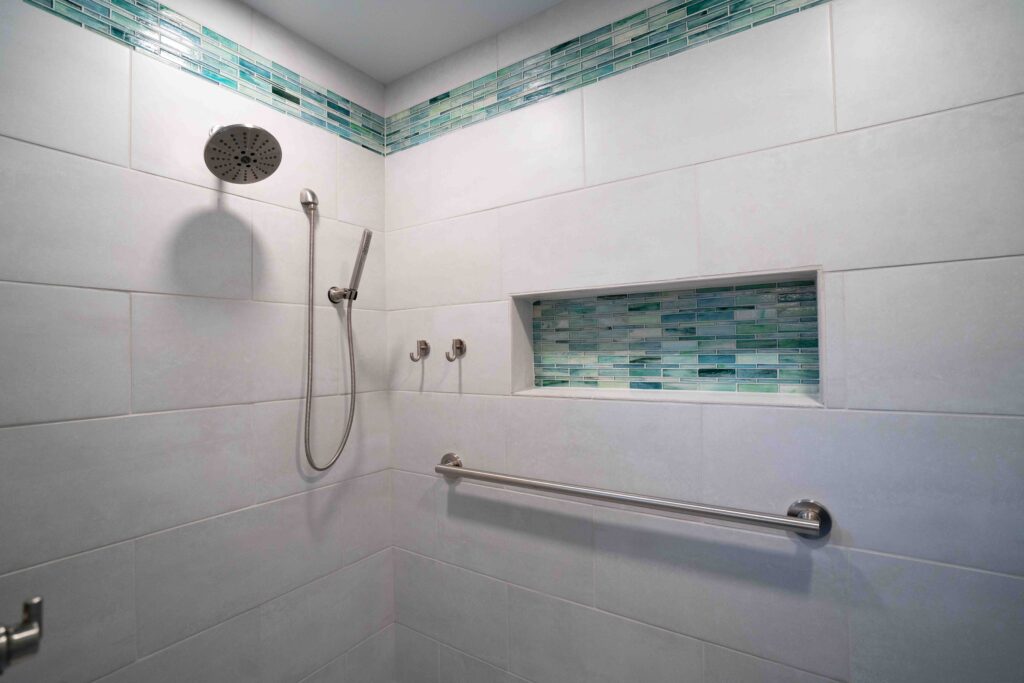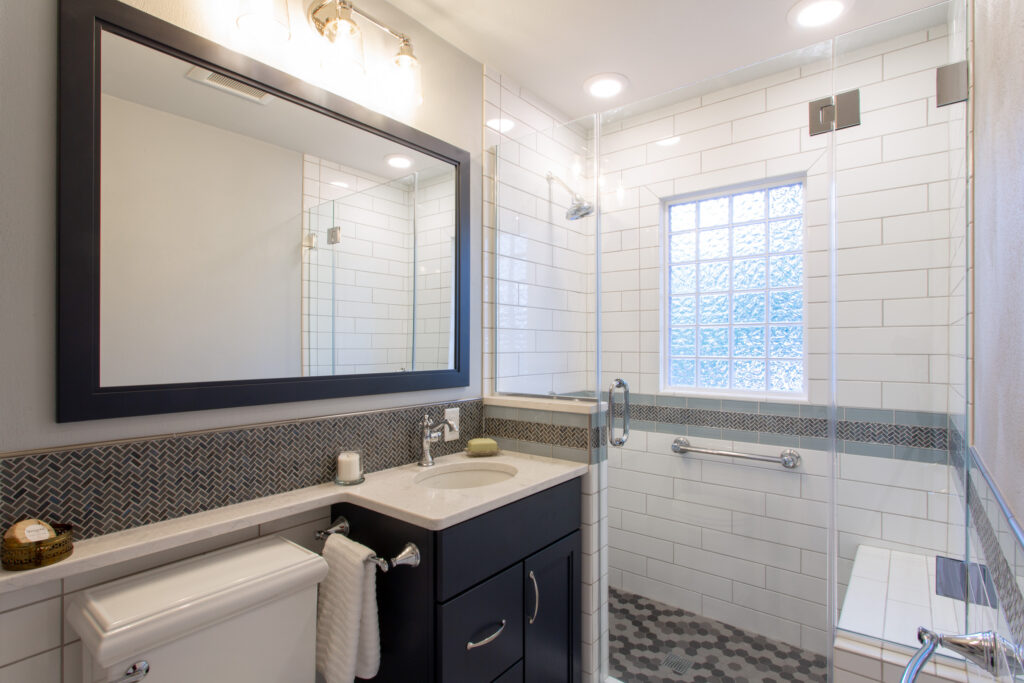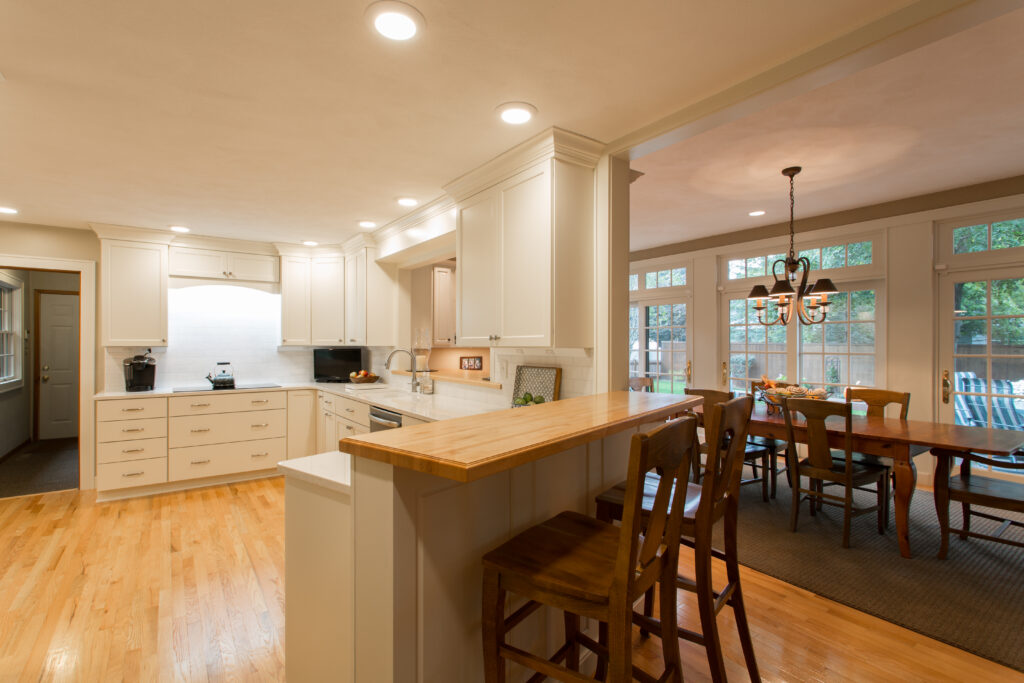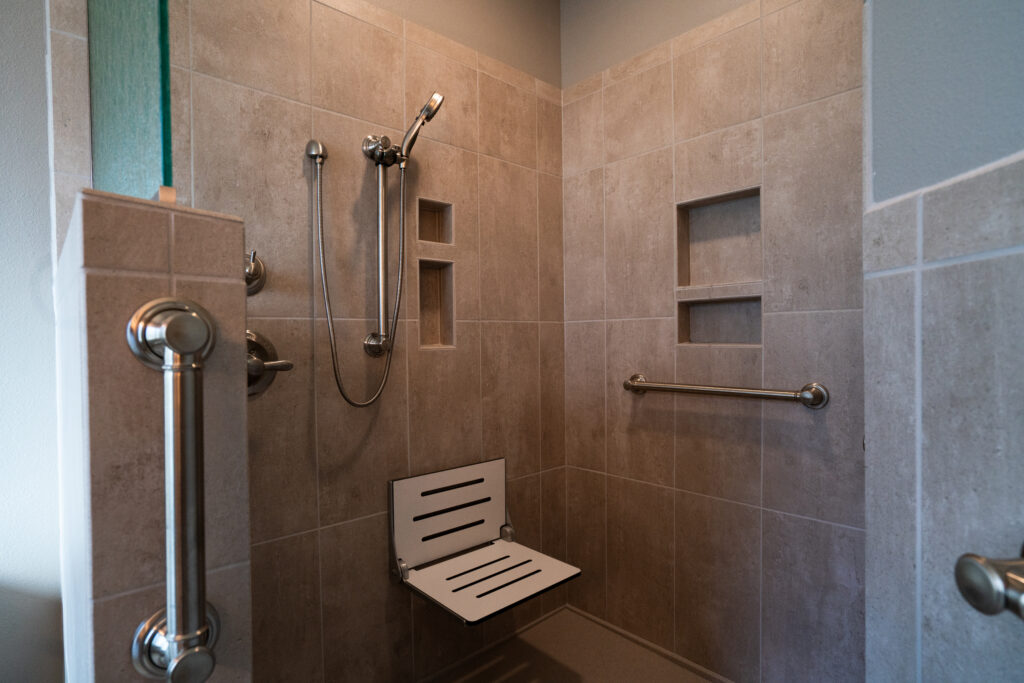As our parents age, helping them stay safe, independent, and comfortable at home becomes a priority. For many families in the Cedar Valley, aging in place is not just a preference; it’s a plan. With the right home safety upgrades, you can give your aging parents the freedom to stay in the place they love while reducing everyday risks.
At Koch Construction, we specialize in creating smart, functional home updates that support aging in place. From thoughtful design to skilled construction, our team helps you plan for today and tomorrow.
What Is Aging in Place?
Aging in place means staying in your current home safely and comfortably as you grow older. It’s about anticipating the physical and mobility challenges that come with age and designing around them. Many older adults would rather avoid the disruption of moving later in life, but without proper updates, familiar spaces can become difficult or even dangerous to navigate.
By planning ahead with accessible, user-friendly upgrades, you reduce the chance of injury, improve daily comfort, and provide peace of mind for the entire family.
Smart Home Safety Upgrades to Consider
1. Safe Entryways and Accessible Hallways
Start with the places your loved ones use every day:
- A no-step entry or low-threshold doorway makes it easier to come and go
- Wider hallways and doorways improve mobility for wheelchairs or walkers
- Lever-style door handles are easier for aging hands to operate
- Install non-slip flooring and keep walkways clear of tripping hazards
2. Bathroom Upgrades for Daily Comfort
Bathrooms are a high-priority space for aging-in-place safety:
- Walk-in showers with built-in seats and grab bars reduce fall risk
- Slip-resistant flooring adds grip and confidence
- Comfort-height toilets and lever faucets support ease of use
- Soft, even lighting improves visibility without glare

Learn how we turn bathrooms into safe, explore our Projects page.

3. Kitchen and Living Area Adjustments
Make the heart of the home easier to use with:
- Pull-down shelving and drawer storage to reduce reaching and bending
- Bright, layered lighting under cabinets and in work zones
- Touchless faucets and smart lighting systems for convenience
- High-contrast materials to make counters and surfaces easier to distinguish

Why Start Sooner Than Later?
Making home safety upgrades before they’re urgently needed means your parents can adjust to the changes over time and enjoy the comfort and freedom they bring. Early planning also allows you to budget thoughtfully and make decisions that support long-term needs rather than quick fixes.
Working with a local, experienced team like Koch Construction means you’re not only getting great craftsmanship, you’re getting trusted guidance every step of the way.

Start Your Aging-in-Place Plan with Koch Construction
If you’re thinking about home safety upgrades for aging parents, now is a great time to get started. We work with Cedar Valley homeowners to make houses safer, more comfortable, and better suited for every stage of life.
Contact our team to schedule a free consultation and start building peace of mind today.
Frequently Asked Questions
Does Medicare cover any home modifications?
In most cases, Original Medicare (Parts A and B) does not cover home modifications for safety or aging in place, such as grab bars or walk-in tubs. However, some Medicare Advantage plans may offer supplemental benefits that include limited coverage for certain home upgrades. It’s important to check with your specific insurance provider or plan administrator for details.
What is the home safety checklist for the elderly?
A home safety checklist for older adults typically includes:
- No-step entryways
- Non-slip flooring throughout the home
- Adequate lighting in hallways, staircases, and entrances
- Secure railings on stairs and walkways
- Grab bars in bathrooms and showers
- Accessible storage and controls (light switches, thermostats)
- Clear and wide paths free of clutter or tripping hazards
- Emergency alert systems or accessible phones
We help families walk through this checklist during remodeling consultations.
How do you prevent falls in the elderly at home?
Preventing falls starts with identifying high-risk areas and making smart changes. Some of the most effective strategies include:
- Installing grab bars and handrails
- Using non-slip flooring and rugs
- Improving lighting in all areas of the home
- Rearranging furniture to create wide, clear walkways
- Placing everyday items at easy-to-reach heights
- Ensuring stairs and transitions between rooms are secure and level
Regular exercise, vision checks, and medication reviews also help reduce fall risk.
